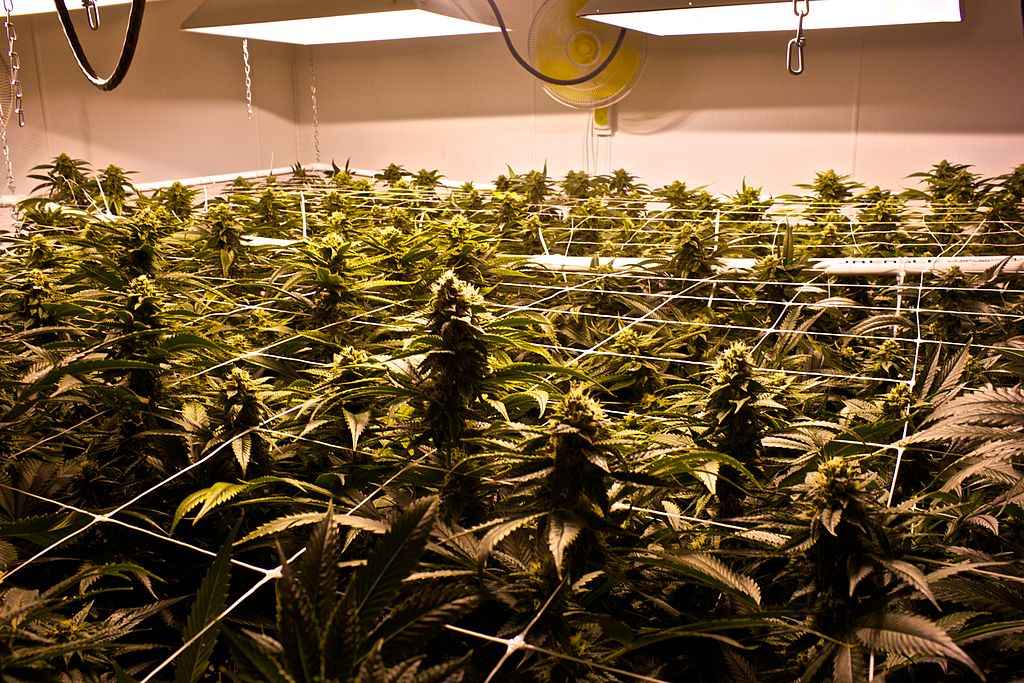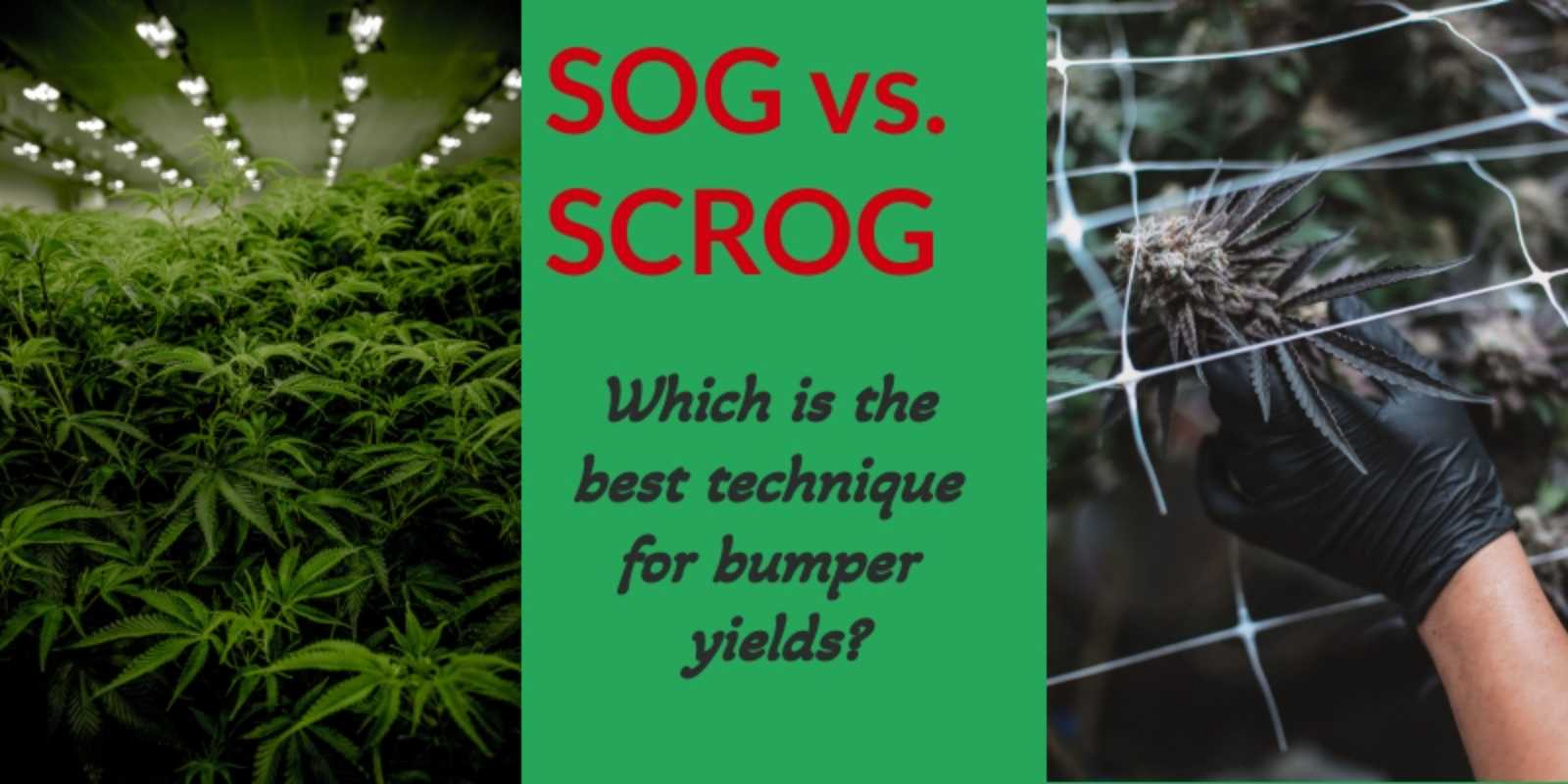Growing cannabis isn’t just about waiting for the buds to take form and mature. Good growers adopt practices to help them get the most yield out of their growing cycles.
While some growers prefer to grow many plants and harvest faster, others would rather have fewer plants that grow bigger and take longer to mature.
SOG and SCROG are rarely understood. And I say this with the utmost love in my tone, knowing just what they’re isn’t enough.
These two techniques are incredibly powerful yield boosters, and if you learn when each is the most favorable for your growing condition, you’re twice equipped to harvest more buds.
While most beginner growers want to try anything that promises better yield, SOG and SCROG are a little advanced. You’ll need to upgrade your green thumb to be confident enough to implement them.
SOG Vs. SCROG: Which Yields More?
Both techniques will give almost the same quantity, with appropriate conditions for each. However, per plant, the SCROG technique gives you hundreds of grams because of the many bud sites and the longer vegging time. The SOG method rarely yields an ounce per plant, even when you dial the growing conditions to perfection. Still, SOG compensates for the low yield per plant by the high number of plants.
The debate about SOG vs SCROG won’t make sense for you if you’ve never thought of LST as a method to improve yields.
They’re all high-yielding techniques, but your chosen method will depend on your unique growing needs like space, the time you want to dedicate to the process, and the resources at your disposal.
Let’s explore each of them in detail;
All You Need To Know About Sea Of Green (SOG)
Sea of green (SOG) is the technique of maximizing yield by having more plants per square meter. The plants are closely packed, grow short, and mature faster. SOG utilizes light better because it fills the space with more plants so that no light goes to waste.
SOG grow pots are small, inhibiting extensive root growth and the general lateral growth. The plant focuses on vertical growth and nurturing the top buds.
The plant also doesn’t develop many bud sites, but their sheer high number increases yield immensely.
Imagine growing 30 plants per square meter, and each yields 25 grams. SOG gives you massive yield faster.
SOG will work pretty well where the number of plants you can grow concurrently isn’t limited. In states where you can only grow just a few plants, SOG will not be the most practical approach.
Pros Of Sea Of Green Technique Over Larger Plants
- It has a shorter vegetation period and faster growth cycles than SCROG, making it the most appropriate for commercial growth.
- You spread the risk of loss if a plant gets sick
- The plants mature faster
- SOG is the best for small spaces as the plants don’t grow big
- You can move the plants easier than in SCROG because there’s no netting
Cons Of The Sea Of Green (SOG) Technique
- You’ll do more work tending to each plant
- It’s hard to reach all the plants because they’re all clamped together
- If one plant is affected by a disease, it can quickly spread to the next plants
- SOG is impossible where the law limits the number of plants you can grow.
- You will spend more money on the seeds
- The plants won’t have uniform height, thus no even canopy
- Better returns per light because the area to be covered is small
The SCROG Technique
The SCROG technique involves growing fewer plants that are vegged for a longer time. The plants grow bigger and develop more bud sites, thus improving yield.
The technique requires some training; the plants undergo training that evens the canopy. A net is used to create the canopy and level it.
The SCROG technique can be used alongside other training methods that aim to improve exposure to more bud sites and not just the top buds. The technique encourages horizontal growth, and all the bud sites are as exposed as the top colas, and they get the light at its best intensity.

RELATED READ: Can You Scrog During Flowering?
Advantages Of The SCROG Technique
- You spend less on seeds and nutrients
- SCROG gives you a better yield even when the state restricts the number of plants to grow.
- It’s easier to take care of a few big plants than SOG plants.
- SCROG is the best technique for growing big, outdoor strains where space isn’t a problem.
- SCROG is the better technique where vertical space is limiting.
- Allows you better control of the canopy; hence you can have more bud sites on the sweet zone.
Disadvantages Of The SCROG Technique
- If one plant’s health is compromised, it can gravely reduce your yield.
- You will need a much bigger space to use SCROG.
- SCROG plants grow big and bound by the SCROG net, making it difficult to move during bad weather.
- You’ll need to continue twining new growth on the net to maintain the even canopy.
- Longer grow cycles because vegging takes forever!
- You will need the SCROG net, an additional requirement.
SOG vs SCROG: The Verdict
The debate about Sea of green vs. big plants never ends, and that’s probably because they’re all proven and highly-rated high-yielding techniques.
As effective as these techniques are, you don’t just choose one because you think it is more popular among growers. You must consider your unique growing needs.
Consider your budget for the whole project and the space you have. And while at it, factor in your own growing experience. I’ve learned that though SCROG involves fewer plants, it requires more experience training cannabis plants because you have to keep new growth in tow.
Levelling the canopy requires some skill, and if you’re not confident yet, you might want to try something easier.
Both SOG and SCROG are effective methods to increase yield, and whichever your growing conditions allow will give you a better yield than you would get if you didn’t try any yield-boosting technique at all.
Nobody does the choosing for you!
External resources:
- https://dutch-passion.blog/sog-vs-scrog-which-one-is-best-for-your-grow/
- https://2fast4buds.com/news/scrog-vs-sog-what-is-better-for-your-autoflowers
- https://www.santyerbasi.com/en/blog/sog-vs-scrog/

